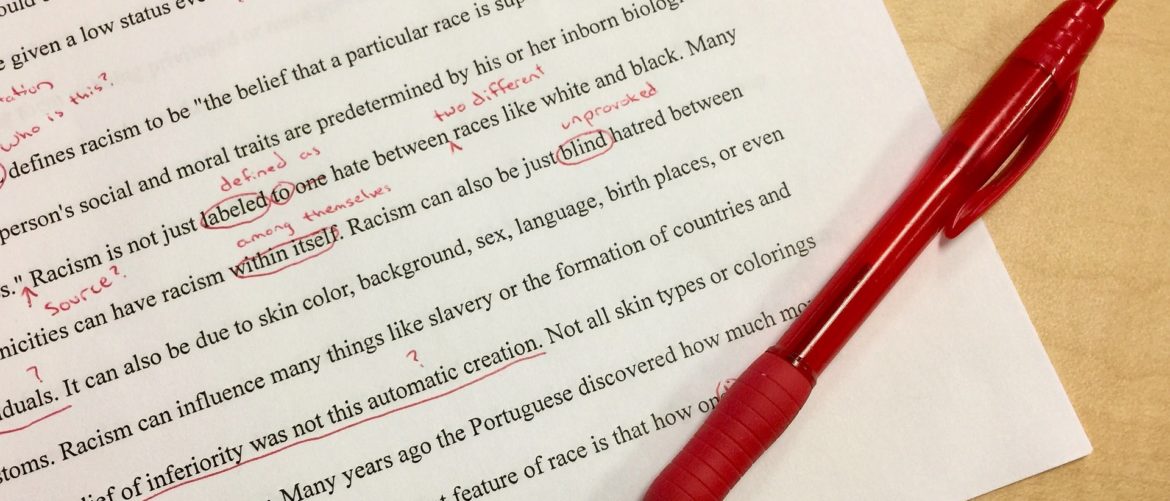Making Corrections
Don’t be fooled, making corrections is a fundamental part of being a teacher. The essence of a TEFL teacher is to be able to teach new stuff as well as to practise the stuff they should know and to make sure they are using it and saying it correctly.
The first thing you need to do is to get comfortable with the concept of correcting. Correcting is not rude, it’s your job. Your students actually want you to correct them and start to get upset if they feel a teacher is not correcting them enough. So you don’t need to worry, you are not offending anybody.
There is a slight difference between a mistake and an error. A mistake is something we all make, even in our own language. You can recognise a mistake by the fact that we clearly know that it’s wrong and as soon as someone highlights it, we are able to self-correct. An error, on the other hand, can be classified as:
- a mistake that the student thinks is actually correct
- a mistake the student makes because they don’t know the correct form so they just guess
- a mistake the student often makes. They know the correct form in theory but they can’t seem to use it correctly in practice.
What to correct
When teaching a PPP lesson, the teacher should focus on correcting the structures being taught. Remember, it is much harder to change a bad habit than it is to create good habits. You also need to keep an eye on mistakes that really make it difficult to understand the speaker, e.g. because the wrong word is used or the pronunciation is too poor to be able to recognise what is being said.
When to correct
During a PPP lesson, when we correct is important. There are two main types of correction:
Instant: We immediately correct the mistake. This is vital during the present and practice stages, where the students are learning the new material and learning how to use it correctly. Here it is important that students are accurate.
Delayed: We wait until the exercise is over before we correct. This is the main strategy used during the performance or production stage. Here, we are trying to improve the students’ fluency and confidence and we think that interruption will cause them to lose their thought processes and confidence.
How to correct
During the presentation and practice stages of a PPP lesson, we focus on teacher correction because we are pretty sure they don’t know the material or are just learning it. But, during the performance part of a PPP lesson and during a skills lesson, we have more correction methods available to us. Generally, the method we use to correct depends on the type of mistake.
If we feel that our student believes they are speaking correctly or guessing the correct word or structure, then we rely on either teacher correction or peer correction.
If we are confident that the student knows or should know what the correct word or structure is, then we use self-correction techniques.
Self-correction prompting
Stage 1 – the face
When we want the student to self-correct, we look at the student, making eye contact, and then we ‘make a face’. The face should signal to the student that something they said wasn’t quite right. Often, the face can be described as similar to unexpectedly eating something sour like a lemon. If you make the face every time the students make a mistake, then they will quickly learn what it represents and will replay what they have just said (in their head).
Stage 2 – repeat the mistake
Next, we repeat the sentence with the mistake in but make the tone questioning. If the student is not sure, we repeat the sentence again, this time really emphasizing the word that is wrong.
Stage 3 – break down the word
Once we have given our look and repeated the sentence accentuating the mistake, we then start to give the word each syllable at a time, waiting for the student to jump in and finish the word. For example, the teacher says “ My father likes pho…….to……….gra……….phy”
You will find that nearly every student has the odd word or structure they just can’t seem to learn or use properly. They understand what it is and how it’s said but it just doesn’t seem to stick and the student can’t seem to remember. You can help them by identifying the problem every time they say it so they get plenty of practice at correcting it. Things to look out for are:
3rd person S He like_ fish
He/She (my father) she likes fish
Have/ Has (my father) he have a fish
Written corrections
The idea that self-correction, rather than teacher correction, is the most effective stands to be true when correcting written work. You start by taking a pen that is of a different colour than the colour the work was written in. (Red is obviously traditional but these days some people consider red to be too aggressive and have taken to using friendlier colours). Ideally, you want to be able to highlight the mistake by underlining the word or sentence (perhaps writing a hint in the margin) and giving it back to the student to self-correct. Then you correct the corrections they have made.
Bear in mind that a page full of red ink is pretty disheartening to a student. It may be that you decide to select some of the more important or bigger mistakes and leave some of the smaller ones to pick up next time.
Warning
If you have a class of students that are comfortable with each other, then you may rely on peer correction for both verbal and written corrections. It is a great tool as they learn to analyse themselves and each other. Please be aware that there are some cultures that are really uncomfortable being corrected by their peers as well as that some people will feel uncomfortable correcting someone they consider to be in a position of respect or authority (a boss or an older student).
Correcting pronunciation
With so many things happening at the same time, it can often be difficult, especially in the first few months, to keep on top of everything. One of the things that often get lost in the confusion is making corrections. A tip to prepare yourself for being able to correct is to have in your head the kind of mistakes you are going to hear. This is really easy to do when it comes to pronunciation problems. Most nationalities have their own battles with English pronunciation. As a teacher, you can help yourself by researching on the internet what the normal problems are. Simply type in the search engine “Chinese pronunciation problems” and you will get plenty of information. It is the same as most things. The minute you are aware of it, you will hear it all the time.
Links:
TEFL Courses & TEFL Training Programmes
TEFL Jobs & English Teaching Positions

